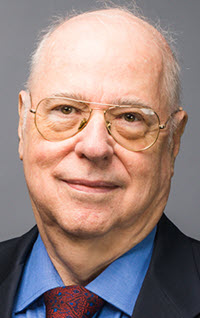Abstract
Excerpted From: Edward A. Purcell, Jr., Race and the Law: The Visible and the Invisible, 66 New York Law School Law Review 141 (2021/2022) (204 Footnotes) (Full Document)
 Sometimes the law “sees” race, and sometimes it does not. Sometimes it recognizes race as legally relevant, in other words, and sometimes it does not. Over the centuries, American law has always shown a keen awareness of race as a social fact, but that awareness has not determined when and how the law made that social fact legally relevant. The pivotal questions are when, how, to what extent, and for what purposes does the law decide to “see” or not “see” race.
Sometimes the law “sees” race, and sometimes it does not. Sometimes it recognizes race as legally relevant, in other words, and sometimes it does not. Over the centuries, American law has always shown a keen awareness of race as a social fact, but that awareness has not determined when and how the law made that social fact legally relevant. The pivotal questions are when, how, to what extent, and for what purposes does the law decide to “see” or not “see” race.
This essay is divided into seven parts. Part II surveys the period from the seventeenth century to the Civil War and shows that the concept of “race” was evident as a central part of formal American law. Part III discusses the period from the Civil War to World War II and identifies how the law continued to see “race” and accept it as a valid basis for racial discrimination despite the passage of the Thirteenth, Fourteenth, and Fifteenth Amendments. Part IV addresses the social and cultural changes that followed World War II and the Warren Court's pathbreaking equal protection decisions which began to see “race” anew as a legal category that violated the Constitution when used for unjust and “invidious” purposes.
Part V examines the period from the 1970s to the present when opposition to the civil rights movement hardened and spurred the idea that law should never “see” race as a valid legal category but instead be entirely “colorblind,” thus suggesting the problematic nature and the partisan political uses that the “colorblind” idea inspired. Part VI examines in detail some of the ways that “colorblind” law, by refusing to “see” race, allows and even encourages the continuation of much de facto racial discrimination and inequality. The essay concludes with Part VII by briefly marking the continuing political struggle between those who insist on a “colorblind” law and those who understand that such an insistence often serves to obscure the discriminatory nature of many of the law's operations and consequences.
[. . .]
“In order to get beyond racism, we must first take account of race,” Justice Harry Blackmun maintained in 1978. “There is no other way.” Some thirty years later Chief Justice John Roberts disagreed, embracing the concept of “colorblind” law: “The way to stop discrimination on the basis of race,” he proclaimed, “is to stop discriminating on the basis of race.” While debate between advocates of those two positions continues, the real-world lesson of “colorblind” law and “colorblind” constitutionalism seems clear. Blackmun's position, though fraught with difficulties, at least recognizes fundamental social and legal truths; Roberts' position, though sounding noble and idealistic, strikes me as clueless if not simply disingenuous. The choice between the two is the choice that Americans have been making for almost four centuries: When do we wish to have the law “see” race, and when do we wish it to make race invisible? More important, when and why do we wish the law to do one or the other?
Joseph Solomon Distinguished Professor, New York Law School. J.D. Harvard Law School, 1979; Ph.D. University of Wisconsin, 1968; M.S. University of Kansas, 1964; A.B. Rockhurst College, 1962.


